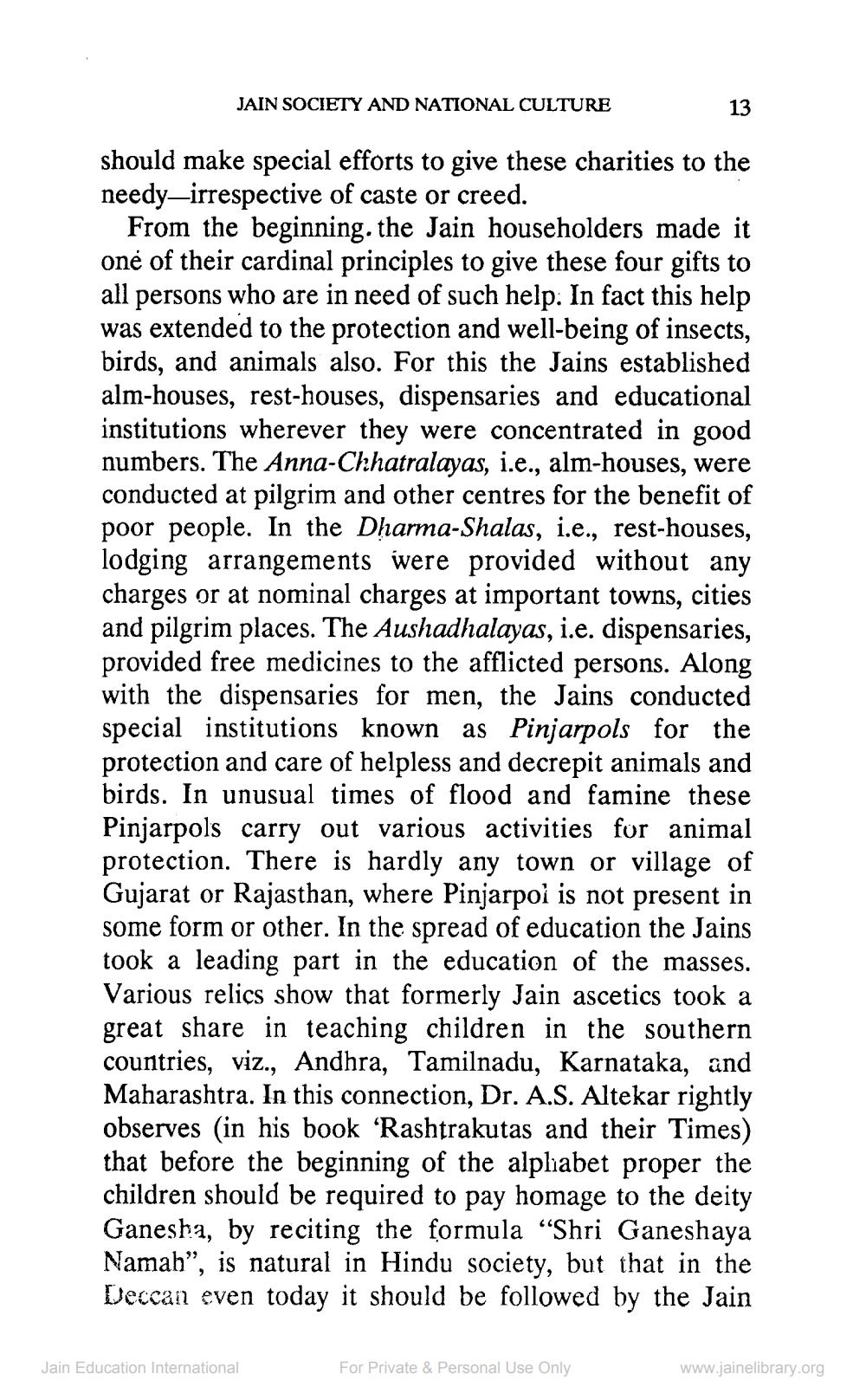________________
JAIN SOCIETY AND NATIONAL CULTURE
13
should make special efforts to give these charities to the needy-irrespective of caste or creed.
From the beginning. the Jain householders made it one of their cardinal principles to give these four gifts to all persons who are in need of such help. In fact this help was extended to the protection and well-being of insects, birds, and animals also. For this the Jains established alm-houses, rest-houses, dispensaries and educational institutions wherever they were concentrated in good numbers. The Anna-Chhatralayas, i.e., alm-houses, were conducted at pilgrim and other centres for the benefit of poor people. In the Dharma-Shalas, i.e., rest-houses, lodging arrangements were provided without any charges or at nominal charges at important towns, cities and pilgrim places. The Aushadhalayas, i.e. dispensaries, provided free medicines to the afflicted persons. Along with the dispensaries for men, the Jains conducted special institutions known as Pinjarpols for the protection and care of helpless and decrepit animals and birds. In unusual times of flood and famine these Pinjarpols carry out various activities for animal protection. There is hardly any town or village of Gujarat or Rajasthan, where Pinjarpoi is not present in some form or other. In the spread of education the Jains took a leading part in the education of the masses. Various relics show that formerly Jain ascetics took a great share in teaching children in the southern countries, viz., Andhra, Tamilnadu, Karnataka, and Maharashtra. In this connection, Dr. A.S. Altekar rightly observes (in his book 'Rashtrakutas and their Times) that before the beginning of the alpliabet proper the children should be required to pay homage to the deity Ganesha, by reciting the formula "Shri Ganeshaya Namah”, is natural in Hindu society, but that in the Deccan even today it should be followed by the Jain
Jain Education International
For Private & Personal Use Only
www.jainelibrary.org




